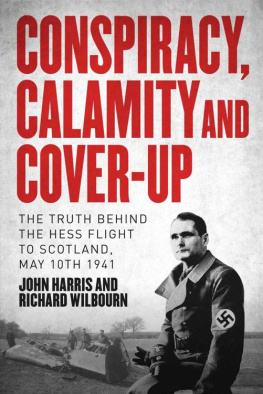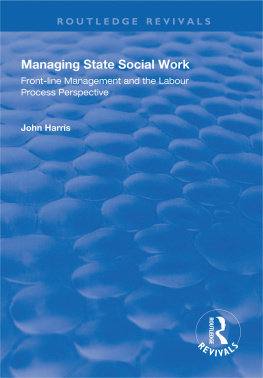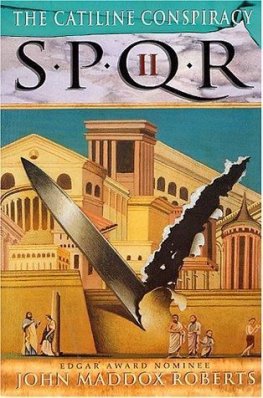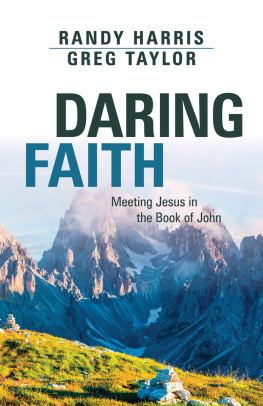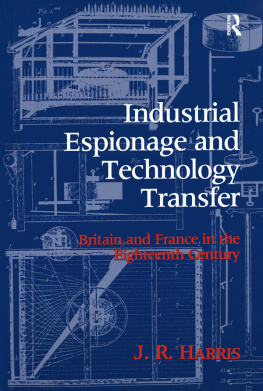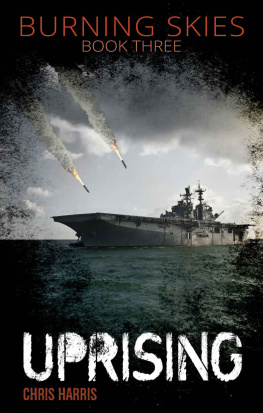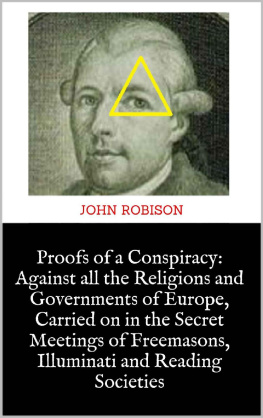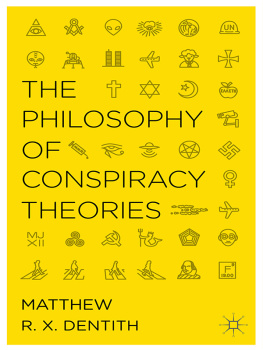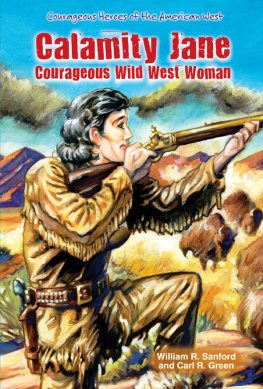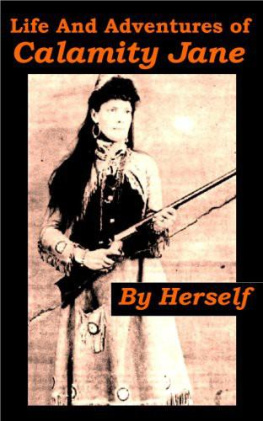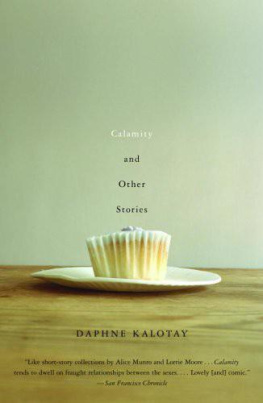John Harris - Conspiracy, Calamity, and Cover-Up
Here you can read online John Harris - Conspiracy, Calamity, and Cover-Up full text of the book (entire story) in english for free. Download pdf and epub, get meaning, cover and reviews about this ebook. year: 2023, publisher: Unicorn Publishing Group, genre: Science fiction. Description of the work, (preface) as well as reviews are available. Best literature library LitArk.com created for fans of good reading and offers a wide selection of genres:
Romance novel
Science fiction
Adventure
Detective
Science
History
Home and family
Prose
Art
Politics
Computer
Non-fiction
Religion
Business
Children
Humor
Choose a favorite category and find really read worthwhile books. Enjoy immersion in the world of imagination, feel the emotions of the characters or learn something new for yourself, make an fascinating discovery.
- Book:Conspiracy, Calamity, and Cover-Up
- Author:
- Publisher:Unicorn Publishing Group
- Genre:
- Year:2023
- Rating:4 / 5
- Favourites:Add to favourites
- Your mark:
- 80
- 1
- 2
- 3
- 4
- 5
Conspiracy, Calamity, and Cover-Up: summary, description and annotation
We offer to read an annotation, description, summary or preface (depends on what the author of the book "Conspiracy, Calamity, and Cover-Up" wrote himself). If you haven't found the necessary information about the book — write in the comments, we will try to find it.
Conspiracy, Calamity, and Cover-Up — read online for free the complete book (whole text) full work
Below is the text of the book, divided by pages. System saving the place of the last page read, allows you to conveniently read the book "Conspiracy, Calamity, and Cover-Up" online for free, without having to search again every time where you left off. Put a bookmark, and you can go to the page where you finished reading at any time.
Font size:
Interval:
Bookmark:

 First the truth is ridiculed. Then it meets outrage.
First the truth is ridiculed. Then it meets outrage.Then it is said to have been obvious all along.
Arthur Schopenhauer During the week ending 18 October 2020, John Harris had an untypically unpleasant exchange of correspondence with Sir Richard J. Evans, nominally one of the foremost British historians. Sir Richard had just published a book on Nazi Conspiracies, The Hitler Conspiracies: The Third Reich and the Paranoid Imagination and Harris and Wilbourn were clearly in the firing line (for those interested, see his Chapter 4) The main hypothesis was that conspiracy theories are no more than fake news, citing the USA with The Donald. All very dangerous, etc, etc. The following week Sir Richard, fronting his new books publicity drive, enjoyed a BBC Radio 4 interview in which he basically said the same thing.He told Harris he would only communicate with us if we first critiqued Chapter 4 of his new book. This we did in the form of five detailed pages, and then that was it. No debate. Nothing.Presumably he had got from us what he wanted.Somewhat surprisingly, in his Chapter 4, Sir Richard had made some silly, sloppy errors of fact. The Duke of Kent (190242) was stated as being killed in an air training accident, when in fact the flying boat in which he was travelling crashed into a hillside, and once pointed out, things became quite unpleasant. We have no issue whatsoever with criticism if it furthers the debate and is at least factually accurate, but to land a few cheap shots without even bothering to explain why we are wrong is disappointing and unfair to say the least. Almost uniquely, Sir Richard appears to believe the Hitler communique to the German nation of 13 May 1941, which of course described Hess flying unaided and under a delusion.His chosen interpretation alone is incredible, but that is of course his prerogative. Presumably, being Knighted and a Cambridge professor, he must know far more than us, but in this case we suspect that he (or, more likely, his paid researchers) were too busy criticising us for a cheap shot literary effect to have time enough to take too much notice of the actual facts of the Hess case. In the early new year of 2021, John Harris discovered that in 2013 the Leverhulme Trust had funded Sir Richard to the tune of some 1.5 million to research conspiracy and democracy. It is these authors contention that Sir Richard and his team have themselves ill served democracy by simply decrying and disparaging the dissenters. The Hess affair, unfortunately for Sir Richard, is very much a conspiracy and we just hope that he and his undoubted brain have not been bought to try and cover up that fact. Why not be radical and instead state the facts, that surely he must know, interpret them for us dullards and then let the readers decide for themselves? Just think how daring that approach might be.This thankfully untypical episode has just made us more determined to carry on and prove Sir Richard and his ilk wrong. It also makes us question who writes history if inconvenient facts are just disregarded by the Great and the Good in favour of some easy recognisable dialogue that actually makes little sense. In addition, the discovery of the 1.5 million funding seems to pose different questions. In the past we have often wondered how victors history might possibly distort the real truth; now we are seemingly also targets for academic history, funded by third parties, all presumably with their own agendas. The former is at least more understandable as to motive.However, the real issue with Sir Richards hypothesis is that he simply chose the wrong subject for his Chapter 4. We of course agree that there has been much nonsense written about certain aspects of the Nazi period and, in particular, Hess and his flight, but sadly for Sir Richard, the Hess flight is a conspiracy. Our approach, not being superior Oxbridge historians, has always been to allow our readers the choice of what they believe. If we then continue to write rubbish, presumably no-one will buy our books. We willingly take that risk. However, we have never written anything that we do not believe to be true or accurate at the time of writing. (Nor have we, unlike other Hess historians, inserted documentation into any archive in support of our beliefs).Consequently, we would now dedicate this book to Sir Richard and his team, in the hope (forlorn, probably) that they take the time to learn the facts of the Hess case before coming to judge others who have at least attempted to do so to the best of their abilities (and budgets). Lastly, we should state clearly that we have self-funded both our own research over many years and the many accompanying beers. The beer tabs alone would probably amount to 1.5 million.
Cheers, Sir Richard. HELPFUL DEFINITIONS Conspiracy A secret plan to commit a crime or do harm: a plot. (From Latin conspicuus) Conspiracy theory An explanation for an event that invokes a conspiracy by sinister and powerful groups, often political in motivation, when other explanations are more probable. Calamity An event causing great and often sudden damage or distress, a disaster. (From Latin calamitas) Cover up To completely cover or conceal. Fake News False or misleading information presented as news. The term was first used in the 1890s. Truth The quality or state of being true. Arthur Schopenhauer was an influence on Rudolf Hess see Eugene Bird, The Loneliest Man in the World , Sphere, London, 1974. In 2013 I applied for and was awarded a Leverhulme Programme Grant on Conspiracy and Democracy. The total sum awarded for the 5-year programme was 1,584,611. (Prof. Sir Richard Evanss website). The Oxford Compact English Dictionary , OUP, Oxford, 1996. In late January 1942, Winston Churchill was again in trouble. On the 27th he reported to the House of Commons, having recently returned from the USA:We have had a great deal of bad news lately from the Far East, and I think it highly probable, for reasons which I shall presently explain, that we shall have a great deal more. Wrapped up in this bad news will be many tales of blunders and shortcomings, both in foresight and action. No one will pretend for a moment that disasters like these occur without there having been faults and shortcomings. I see all this rolling towards us like the waves in a storm, and that is another reason why I require a formal, solemn Vote of Confidence from the House of Commons, which hitherto in this struggle has never flinched.In short, Churchill had seen fit to hold a vote of confidence; ostensibly so as to provide a sign of a unified nation to the various Allies that had joined Britain in their fight against the Axis powers.As Churchill had openly confessed, the war was not going well and privately had admitted that,The bulk of the Tories hated him, that he had done all he could and would be happy to yield to another.Although the self-analysis and doubt were perhaps uncharacteristic, he then went on to say in the House of Commons:We have also to remember how oddly foreigners view our country and its way of doing things. When Rudolf Hess flew over here some months ago, he firmly believed that he had only to gain access to certain circles in this country for what he described as the Churchill clique to be thrown out of power and for a government to be set up with which Hitler could negotiate a magnanimous peace. The only importance attaching to the opinions of Hess is the fact that he was fresh from the atmosphere of Hitlers intimate table. But, Sir, I can assure you that since I have been back in this country, I have had anxious inquiries from a dozen countries, and reports of enemy propaganda in a score of countries, all turning upon the point whether His Majestys present Government is to be dismissed from power or not.This brief, yet deliberate mention is surely the key to understanding the Hess affair. This was the first time that Churchill had given any particular mention on the matter; the Scottish air crash had already taken place some eight months earlier. He had, of course, been quizzed in the House previously (13 May 19 May and 10 June) but had always managed to bat away the questioners.However, now, when he was looking for personal support, he saw fit to refer to certain circles as being the political target of the Hess flight. Was this again a ploy to challenge the self-same certain circle to finally put up or shut up? Churchill had previously employed a very similar tactic on 7 May 1941, just three days before the Hess flight.This book seeks to first identify those certain circles and secondly to ascertain if they were real or a mere figment of the imagination of the British Secret Services. Who were they and how could the Churchill clique be thrown out of power?We are also interested by Churchills use of the word dismissed. In wartime, general elections are not allowed and so the general public cannot vote an incumbent out of power. There is only one person who can dismiss a sitting prime ministerIncidentally, Winston Churchill won the Vote of Confidence by 464 to 1. By way of pure coincidence, the only dissenter was James Maxton, MP for Bridgeton, Glasgow, his constituency being less than 16 miles away from the Hess crash site. Anthony Eden, The Reckoning , Cassell, London, 1965. CONTENTS Since the 1990s we have made a nuisance of ourselves to many. In particular, and with specific reference to this book, we would like to thank the following for their continued tolerance:Andrew Rosthorn and Spike Hodbod, for continued, support and very welcome Lobster reviews.William and Barnaby Blacker, in connection with their grandfather, Stewart Blacker.Aurelia Borenius and her late father, Lars, for insight on Tancred Borenius.Persis Bower, for information on Francis Richard Christian Cecil Fletcher (190351).Frances Box of Steeple, in connection with Stewart Blacker.Helen and Annie Cara, for diagrams, correspondence and file management.Dennis Coryell, our Washington, DC research assistance.Edgar Dahl in Giessen, Germany for translation, good company and liaison.John Darbyshire, for ATC expertise concerning the Sikorski flight to Prestwick.Wolf Hess jnr, for the new information concerning the DNA and calligraphy tests.Dr Esther-Julia Howell, at the Institut fr Zeitgeschichte, MunichProf. Sir Richard J. Evans, for a renewal and reinvigoration of our cussed determination.Thomas Dunskus, in Germany, for encouragement, accommodation, wine and introductions. Sadly, Thomas, who was brought up in the ruins of post-war Berlin, has recently died.Norman Foster in Duxford, for ATC expertise concerning the Sikorski flight to Prestwick.Andreas Gerl, at the Allgu, Germany, for the important new information concerning Prof. Franz Seraph Gerl, his grandfather.Nick Gilder, at RAF Henlow Signals Museum.Glyn Gowans, for encouragement and support and checking notes referring to Prince George, the Duke of Kent.Barbara Graham, for forwarding the previously unpublished notes of Dr Gibson-Graham.Trevor Hearing, at Bournemouth University, for the Northumbrian photograph information.David Horry, in Shanghai, aka. John Quarrington, for providing a completely new interpretation, some of which we suspect is not without foundation.Peter Lowe, in Hertfordshire, for information concerning Gulla Pfeffer.Margaret Morrell, in Ayrshire, for help in eliminating Turnberry from our enquiries. Margaret has recently published the definitive history of RAF Turnberry and should be congratulated accordingly.Matthew Hogan Research Services, Washington, DC, for reference to the 1943 Mercury article.Dominic Hunger, at the University of Basle Library, for reference to Burckhardt.Inga Kemp, at the Orcadian, Orkney Islands.Jan Kozdra, our Polish researcher, translator and friend from Wroclaw.Guido Koller, at the Swiss Archives, Berne, for reference to the Hess family papers.Ramona Lampard, our editor and the eraser of many inverted commas.Brian Luff and Geoff Butler, at the Farnborough Air Sciences Trust, for reference to the post-crash analysis.Tony Noble, of JEMA Publications.Emily Oldfield, at the British Red Cross Museum, London.Prof. John Martin, at Leicester de Montfort University, for reading and support.Sarah MacLean and Yvonne Nicoll, at the Orkney Islands Archives.Stuart Mclean, in Australia, for supplying the Hess flight plan.Peter Padfield, for his continued encouragement and support. Peter sadly died in March 2022, aged 89. Since his death we have been working with his son, Guy to find a fitting repository for his archival material which is typically detailed, meticulous and relevant.Anthony Pilcher and Charlotte Studholme, for some clarification on William Spelman Pilcher.Christian Ppken, State Archivist, Giessen.Prof. Anita Prazmowska, for information regarding the Polish government in exile.Elaine Richards, at Radio Society of Great Britain, for reference to Beadnell Towers.Kristina Ranki, at the Mannerheim Museum, Helsinki.Piotr Rossa, at Wroclaw University, for reference to the Rackiewicz Diaries.Dr Thomas Rtten, at Newcastle University, for assistance in connection with Prof. Gerl at Gailenberg.Joan Schenkar, in New York and Paris, for further insight into Dolly Wilde and Tancred Borenius.Sir Thomas Shakespeare, for assistance in connection with Prof. Gerl at Gailenberg.General Bernd Schwipper, for an excellent meeting, Christmas 2017, and accommodating us royally.Mr and Mrs Small, in Stromness, Orkney IslandsTony Stott, aka. Ford Perfect and Anton Another, specialist in all matters Hess.Dr A. Suchitz, at the Polish Institute and Sikorski Museum, London, for reference to Roman Battaglia, President Raczkiewicz and General Sikorski.Wasyl Sydorenko, at the University of Toronto Library, for identification assistance in connection with Battaglia.Eero Teerikangas, in France, for further Borenius information.The Polish Hearth Club, London for making us very welcome whenever we were invited to attend.Paulus Thomson, at the Anglo-Finnish Society, London, for allowing us to bring the memory of Tancred Borenius to the wider Finnish community.Hugh Watson, in Ayr, for information concerning his father, H.D. Watson, who chauffeured Sikorski across Glasgow on 11 May 1941.Wing Commander (retd) D.L. Preston, for assistance in connection with the navigational aspects of the flight.The staff of: National Archives, Kew, London; British Airways Heritage Collection, Harmondsworth; British Newspaper Archive; Bundesarchiv, Freiburg and Koblenz, Germany; Cambridge City Library, England; Cambridge Crematorium, England; The Carnegie Library, Ayr; Eton College, Windsor; Northampton Central Library; The House of Commons, London; The Holocaust Memorial Museum, Washington, DC; The Indian and Oriental Collection, London; The Imperial War Museum, Duxford and London; The International Red Cross, Geneva (in particular Daniel Palmieri); The Naval Historical Branch, Portsmouth; The Jacobite Society, London; East Kilbride Library, Scotland; Stanford University Library, California; Wiltshire Record Society; Martin Zeileis at the Zeileis Institute, Gallspach, Austria.And lastly our two wives, Ann and Anne. It was either Hess or the golf course. We believe we chose wellThank you one and all.Thankfully, neither Richard nor I can claim any relevant qualifications that render our opinions on the Hess affair any more credible, authoritative or believable than anyone elses. Again, thankfully, we are not academics (with the inherent danger of having to sing for your supper). We are both farmers and I also run a small accountancy practice. Richard can tell you about wheat production and I know something about taxation. Consequently, we merely invite you to read our book and decide for yourself as to our findings about Hess. We should also repeat that unlike our friends the academics, we have received no financial assistance in the research and publication of this, our latest and seventh book on the subject.However, whilst not specifically funded, we do possess a fair degree of scepticism, irony, objectivity, independence, pride and perseverance. We have been learning about and studying the affair since 1987, when Hess died, and we initially became interested simply because the whole affair and its supposed explanation at the time just did not make sense. The 1941 German communique (Hess had gone mad and had flown to the enemy) was still the accepted story and at the time was an easy story to believe, as the somewhat bizarre behaviour of Rudolf Hess at Nuremberg had simply reinforced the notion that he was truly mad and so had quite likely just flown to the enemy. QED.Quite possibly, and even more bizarrely, it now appears that one of the leading British historians, Prof. Sir Richard Evans, still believes this to be the case.Perhaps unfortunately for our wives and, at the time, young children, we soon found out that there was an awful lot more to the story than the very convenient headline explanation. In 1992 we published our first finding. Mrs Roberts, to whom Hess had been writing via Albrecht Haushofer in the autumn of 1940, was the aunt of and close relation to an early member of SOE (SO1), then based at Woburn Abbey. Much of the 1990s was then spent chasing aspects of Hess around mainland Europe, cunningly (in the male mind anyway) disguised as family holidays.Subsequently, we have discovered and explored the role of Tancred Borenius in the affair, before analysing the actual 1941 flight in the early 2010s. We thought (and still think) that by understanding the technical nature and character of the flight we are able to garner further understanding of what was meant to happen, as opposed to what did happen. Peter Padfield, who sadly has recently died, was very helpful to us in this regard by lending us the Pilots notes that came to him via the late Prof. A.W.B. Simpson. Our subsequent books have also introduced the political role of the Polish government in exile. This area in particular is an extremely sensitive subject and is very easy to misinterpret (a crime we suspect we may well have already committed), so we already caveat the subject appropriately. To date we have published six books as our knowledge has expanded and have made discoveries that we believe worthy of wider record and publication. If we discover that we have made errors, we are pleased to acknowledge the fact as above. Thankfully, to date it has been a rare occurrence.This is all very well, and it has all been terrific fun, but we are still not wholly sure we are able to offer the complete solution. Back in 2015, Gordon Corera of the BBC asked us: Well, chaps, was it a coup or a lure? This is now known as the killer question. The honest answer in the year of the eighty-first anniversary of the flight is that we still do not know for sure. Some weeks we are sure the answer is coup, other weeks lure as some new snippet of information comes into the reckoning. We have also thought the affair could well be a hybrid; lure for some participants whilst other players might genuinely have believed a coup was underway. What better way for the far from secure 1941Winston Churchill to discover who the potential British bad guys (or certain circles) were? Let them think a coup is underway, let them eventually show their hands and then pull the plug, courtesy of R. Hess, Esq. Very clever indeed and probably too clever by half if indeed this is what was actually happening. We should also say that there are certainly no shortage of potential candidates for the role of the bad guys, or indeed just guys that disagreed with the British never surrender strategy. In spring 1941, throughout the ruling classes and aristocracy, Churchill, very understandably, had far more doubters and detractors than ardent supporters. Andrew Rosthorn has again been very helpful in demonstrating to us the role of the Labour Party in the Churchillian coalition government of 1941. It no doubt played a crucial role in preserving Churchill in power when, apart from his fine words, both he and Britain were very much on the ropes.We should also (probably) proudly concede that above all the British are masters at being devious. As a nation we have massively punched above our geographical weight by being clever and devious for centuries and we are also notoriously secretive, sometimes even to matters that seemingly are not particularly or vitally important. We hope that the fact that we are still having this debate some eighty years after the event adequately illustrates the point.A very inconvenient constitutional question also arises if some of the potential bad guys also hold a constitutional position. Can one be treacherous against an incumbent government if, for instance, the protagonists are acting (or think they are acting) on behalf of and in the best interests of the monarchy? To answer that complex question, we perhaps need to return to 1689 or even earlier. Do please remember that the British Armed Forces and Secret Services swear allegiance to the monarch, not the government, a point that Hess and his staff were also busily checking in spring 1941.We should also perhaps make clear our position to Rudolf Hess as an individual. We are not revisionist historians, as to date there has been no clear version of history in respect of the Hess affair to revise. All we are trying to do is to understand why Hess flew to Scotland in 1941. He certainly was no martyr to peace. His flight was a simple act of war, as the subsequent Fuhrer Directive 32 makes clear. If Hitler had conquered Russia, Britain and her empire would have been the principal targets once again, without doubt. We are certainly not right-wing apologists in any way whatsoever. We hope at least that much is abundantly clear.There is no doubt we have discovered and learned an awful lot through this process. We may well have in our possession enough pieces of the jigsaw to be able to work out for sure what the big picture on the box itself might be (if we were the more intelligent). However, we are still not sure and so one maxim we have stuck to throughout the past thirty years is never to assume or guess. We went and saw for ourselves, stated what we discovered and will let the reader decide. This is not an easy subject to decipher.So, this time, given the above uncertainty and caveat, we thought it might be a useful exercise to record our detailed findings and debate the various aspects and known facts of the case, in just the same way that a court process might evaluate a case. State and evaluate the evidence and come to a judgement. (Not judge first and then evaluate in hindsight, Sir Richard?) We also wish to record and evaluate the handling of the affair since 1941, in the hope that we may obtain further evidence as to the original intent.Who knows, our conclusion might then be very close to the truth? At times over the past thirty years, it has genuinely felt that we might be able to completely solve the mystery. (Usually through misplaced confidence gained by reason of our ignorance of another aspect of the affair.) Currently, we even doubt that outcome, but we have certainly narrowed down the areas of uncertainty. Whilst we think we know what we do not know, we certainly know what we do. (Sorry, Mr Rumsfeld.)We trust the reader approves of this approach. If we manage to do this well, we hope to engage the reader into a clear debate of the various issues, so they are left in no doubt as to the current pertinent issues and uncertainties. We will also take pride in hopefully making the academics look a little daft. In a so-called democracy and a country boasting a constitutional monarchy and the mother of parliaments, the whole Hess affair and its overbearing secrecy is actually a disgrace, but it is of course Britain and it is of course only eighty plus years laterJohn Harris and Richard WilbournNorthampton and NorfolkSpring 2022 Correspondence between Harris and Evans, October 2020. John McBlain, Rudolf Hess: The British Conspiracy , JEMA, Moulton, 1992. The Gestapo interrogations of Hess staff, May 1941. (As quoted by David Irving in Appendix 1 to Hess: The Missing Years 19411945, Focal Point, Windsor, 2010.) Unbelievably, we have recently been so accused by Herr Jatho of Giessen. Sir Richard recently tweeted that he usually assesses a book by first looking at the Acknowledgements page. I still follow Carrs advice in What is History? to study the historian before you study the book: the first thing I turn to is the Acknowledgements page, to see where the author comes from, identify friends and mentors; then the Preface, then the notes; finally, the book itself. 8 January 202 The Case for the Established History
 Next page
Next pageFont size:
Interval:
Bookmark:
Similar books «Conspiracy, Calamity, and Cover-Up»
Look at similar books to Conspiracy, Calamity, and Cover-Up. We have selected literature similar in name and meaning in the hope of providing readers with more options to find new, interesting, not yet read works.
Discussion, reviews of the book Conspiracy, Calamity, and Cover-Up and just readers' own opinions. Leave your comments, write what you think about the work, its meaning or the main characters. Specify what exactly you liked and what you didn't like, and why you think so.

